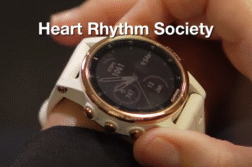CHICAGO, Ill. (Ivanhoe Newswire) – It’s a condition that can literally take your breath away — causing almost a million people a year to have difficulty doing simple tasks like walking and even working. Left untreated, it can lead to a life-threatening condition, blood clots. An innovative procedure is helping those people get their lives back.
Fun, fast and full-contact – that’s what Jessica Lopez loves about flat-track roller derby! But a few years ago, she had to hang up her skates.
“I had coughed all over the sink and there was just a lot of blood,” Jessica painfully recalls.
She made her way to Northwestern Memorial Hospital.
“We’re able to make the diagnosis that one side of her one lung, on the right side, was completely filled with clot, no blood flow was going through one side, and that led us to the diagnosis of CTEPH,” explains Chris Malaisrie, MD, a cardiac surgeon at Northwestern Medicine.
Jessica needed an immediate, life-saving surgery called PTE. The 10-hour procedure involved opening the chest and attaching Jessica to a heart-lung bypass machine.
Dr. Malaisrie further explains, “We are able to take a look inside the pulmonary artery, turn the circulation off so there’s no blood flooding in the field, and then, in meticulous fashion, slowly peel that clot away from the pulmonary artery”.
Almost immediately, Jessica could breathe better, and she believes what she learned on the track is why she is here today.
“It completely changed me as a woman to being able to not just be able to be more active, but to be more mentally strong, not just physically strong. And I’d never had that in my life,” Jessica reflects.
Treatments for CTEPH include blood thinners, balloon angioplasty and open-heart surgery. People as young as teenagers to 80 can be good candidates for the PTE surgery.
Contributors to this news report include: Marsha Lewis, Producer; Kirk Manson, Videographer; Roque Correa, Editor.
To receive a free weekly e-mail on medical breakthroughs from Ivanhoe, sign up at: http://www.ivanhoe.com/ftk
Source:
MEDICAL BREAKTHROUGHS
RESEARCH SUMMARY
TOPIC: ROLLING AWAY BLOOD CLOTS
REPORT: MB #5307
BACKGROUND: The most common cause of pulmonary embolism is deep vein thrombosis, where blood clots form in the deep veins. The clots usually form in the legs and can break loose and travel through the bloodstream to the lungs, causing a pulmonary embolism. Other risk factors for developing blood clots include prolonged immobility, surgery, trauma, obesity, smoking, certain genetic conditions, and a history of previous blood clots. Pulmonary embolism affects nearly 900,000 people a year in the United States.
DIAGNOSING: If you have an underlying heart disease, diagnosing pulmonary embolism can be difficult. Healthcare providers will often discuss medical history, perform a physical exam, and order a number of different tests. A blood test is commonly ordered in order to target the cloth-dissolving substance called D dimer. High levels of this could mean there is an increase in blood clots in someone’s system. Blood testing will also measure the level of oxygen and carbon dioxide in the blood. A clot in a blood vessel in the lungs could lower levels of oxygen in the blood. Chest X-rays can also help to rule out other possible conditions when trying to diagnose a pulmonary embolism. Ultrasounds are used to scan the veins for deep vein blood clots. If the ultrasound detects blood clots treatments are usually begun immediately. Treatment options commonly include medicines, surgeries, and other procedures all focused on keeping blood clots from growing and preventing new blood clots from forming.
(Source: https://www.mayoclinic.org/diseases-conditions/pulmonary-embolism/diagnosis-treatment/drc-20354653
NEW TECHNOLOGY: A device called the FlowTriever is the first-ever mechanical thrombectomy device according to the Food and Drug Administration. The device removes large clots from large vessels in the pulmonary arteries without assistance from thrombolytic drugs and ICU stays. The procedure usually lasts one hour and is done under unconscious sedation. The device acts by targeting aspirate clots with the use of large lumen aspiration catheters to quickly remove clots and revamp blood flows.
FOR MORE INFORMATION ON THIS REPORT, PLEASE CONTACT:
Megan McCann
If this story or any other Ivanhoe story has impacted your life or prompted you or someone you know to seek or change treatments, please let us know by contacting Marjorie Bekaert Thomas at mthomas@ivanhoe.com




